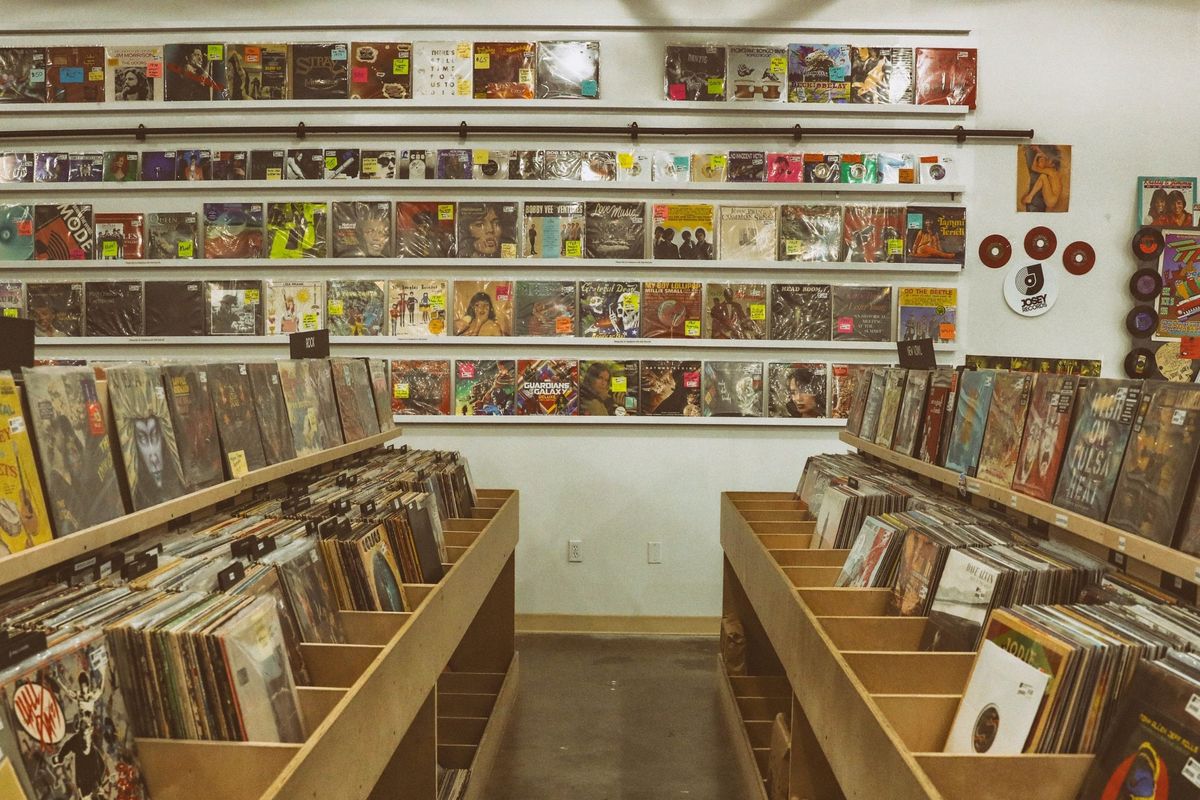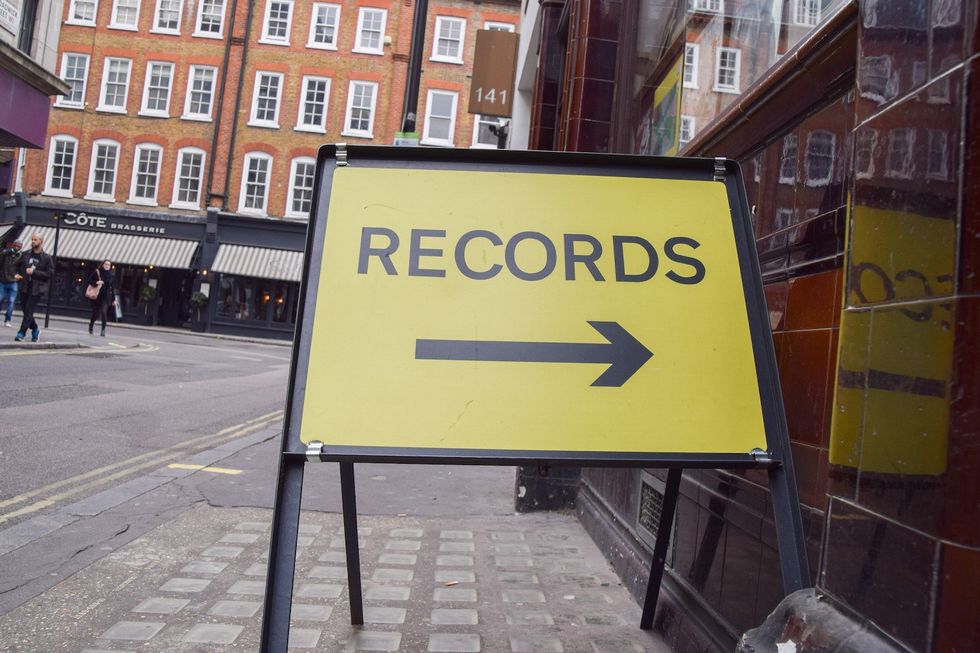
Do We Still Need a Record Store Day?
Photo by Mick Haupt via Unsplash.
To continue reading
Create a free account or sign in to unlock more free articles.
By continuing, you agree to the Terms of Service and acknowledge our Privacy Policy
Register
The content is free, but you must be subscribed to Okayplayer to continue reading.
THANK YOU FOR SUBSCRIBING
Join our newsletter family to stay tapped into the latest in Hip Hop culture!
Login
To continue reading login to your account.
Forgot your password?
Please enter the email address you use for your account so we can send you a link to reset your password:

It might seem like a distant memory at this point, but it wasn't terribly long ago thatRecord Store Daywas a 24-hour affair with a fraction of its current reach. Now internationally celebrated twice (and for a stretch, as many as four times) per year, the crate-digging holiday has grown at a rate commensurate to the vinyl market it almost singlehandedly pulled from the cliff. But what began as an initiative seeking to revive an ailing physical media format and the local businesses devoted to their preservation, proved wildly successful in the former, and relegated the latter to an afterthought.
While it's true vinyl sales were seemingly on an uptick at the time of its official launch in 2008, the market for vinyl as a whole was effectively on life support after experiencing a 43% dive between 2000 and 2006. The shift was drastic and felt at every level of record vending and distribution, but became particularly evident in 2007 when Tower Records, a giant and iconic multinational music retailer, closed the doors at nearly all of its locations outside of Japan.
Rightfully panicked and hoping to bring new patrons into their hallowed and expertly-curated cathedrals of overlooked catalogs and regional rarities, the shop owners and the leaders of various groups advocating for independent music stores --including Coalition of Independent Music Stores, Alliance of Independent Media Stores, and the Department of Record Stores -- held a forum in Baltimore with the lone mission of devising a scheme to both celebrate and revitalize an exchange many of them had spent decades cultivating without much of a profit motive.
To attract collectors and casual buyers alike, the inaugural Record Store Day in 2008 featured 10 limited edition titles only available in about 100 stores nationwide. First-year sales figures are hard to come by, but the expansion to 85 titles in the following year is a solid indication of how quickly stores were to adopt. And by 2010, both the metrics and momentum were irrefutable as 1,000 shops across the country took the "RSD Pledge" and stocked their shelves with now hundreds of in-store exclusives. The response was so overwhelming, a second day of observance was added on Black Friday that year, along with an annual (and entirely ceremonial,) ambassadorship program, giving the RSD the vote of approval and spokesmanship of an established artist.
Over the course of the next five years, Record Store Day anchored and drove a renewed interest in vinyl so palpable even the majors began to issue pressings of new and catalog albums again. And with their involvement, vinyl eventually reclaimed the physical media crown following a decade and a half of year-over-year market growth.
On its face, labels and fans opting for gatefolds and acetates over jewel cases and plastics is presumably what the record enthusiast of ten years prior might have hoped for. In practice, though, it amounted to -- and compounded-- some of the crippling drawbacks associated with revitalizing the format without any investment into the manufacturing process behind it.
In short, the added demand for vinyl without the infrastructure to meet it clogged the already crammed production calendars of pressing plants worldwide. With label money now integral to the resurgence of a whole market, top-billing artists were receiving top-billing slots on the production schedule, forcing independent musicians to turn in their projects well ahead of their intended release dates or suffer drastic delays as a result. This was acutely felt during the pandemic's supply-chain shortage, when many artists chose to release cassettes as the physical version of their new albums to avoid any complications caused by the influx of pop stars with towering vinyl orders. But it can be more broadly observed in the average price of a new album on wax, which has steadily ramped up as supplies remained limited.

Along with creating cut-throat competition for priority on the factory floors, Record Store Day has also made it increasingly difficult for secondhand shops to sustainably participate. Arbitrary minimums on orders of RSD-stamped titles put traditional vinyl vendors (who sell used pieces, as opposed to new pressings and recent reissues,) in an untenable spot, forcing them to either take on more copies of an album than they can confidently move or stay out altogether.
"I get 300,000 calls starting now until two weeks after Record Store Day about limited edition, hot pink, scratch and sniff Taylor Swift records," says Tom Noble, DJ and owner of Superior Elevation Records in Brooklyn.
For Noble, a boisterous, label-studying mainstay of NYC's used vinyl exchange and DJ circuit, the numbers don't add up. "You order a bunch of that stuff, but you also have to buy 30 records at $27 a piece that are done by random Coachella bands who are in the microfiche section of the Coachella menu. And people only want the Taylor Swift, so those records end up just becoming trash."
Though he doesn't see a practical point of entry to the overtly gamified "RSD exclusive" racket, Noble considers Record Store Day an effective draw for corralling prospective customers through the doors of his Williamsburg storefront. "It actually whips people into a frenzy to go hit a shop one day. So even if you're not entering in Record Store Day products, you're still going to capitalize on the frenzy of having a really hooked up Saturday at your shop," Noble admits.
For small businesses operating on even smaller margins, the bi-annual boost in foot traffic is needed and necessary. But the gotta-catch-em-all-ness of RSD's treasure-hunting design doesn't amount to reliable and consistent sales. And it's bred a new strain of customer hyper-focused on capitalizing off the limited availability of RSD-exclusive titles, who only shows up on the third Saturdays of April and November, hoping to turn a profit on the resale market the following week. "It's not bringing you sustainable business, it's only bringing you the vultures who are swooping in to buy the stuff so they can resell it on eBay two days later for a 50% markup or something," Noble notes.
Travis Klein, the owner of Bushwick's venerable Human Head Records, has identified a good grip of those vultures scouring for would-be rarities in his own aisles. "So much of the Record Store Day clientele cycle between prospectors looking to make money on the things that they think they're going to be able to flip and the people who become fans of the day and the collectibles and then run around trying to find places to get them before the flippers," Klein says. For the Human Head proprietor, who claims to have attended one of the very first observations of Record Store Day in the country but has yet to actually participate in it as a store owner, the record trade isn't about generating FOMO for the sake of it, but providing a space for deep listeners with interests (and motives,) beyond profit to obsess freely, learn openly, and maybe even put a greying record man onto something he might not have come across.
As we approach yet another run through the crates (just five months since the last,) the gains ushered by Record Store Day are crystalline. Records are now the widely preferred form of tangible media. Pressings of new and hard-to-find titles are readily available, if not in-store, then almost certainly on one of the thousands ofDiscogs pages for shops and private collectors stateside and abroad. And, thanks to a handful of pressing plant start-ups founded over the last few years to meet an insatiable demand, artists at every tier of the industry are finding ways to affordably cut their own wax.
However, it feels equally important to at least acknowledge vinyl, as a format and a market, no longer needs saving in 2023. A decade and a half of galvanizing collectors, retailers, and casual hobbyists has run its course and served its purpose. But, along the way, it has also revealed small businesses might have always been a secondary concern. Until the organization behind it is able to relax some of its cartel tendencies, factor the prosperity of the holiday's namesake into the equation, and ultimately, resolve that bit of inherent dissonance, Record Store Day will always feel categorically empty in both spirit and promise, no matter how many grails get reissued each year. We've reached a point where vinyl's future seems firmly protected and untethered from the adoption of record-selling ploys meant to benefit only those who play ball. Record Store Day should take heed. And we should probably start asking ourselves whether we even need it anymore.